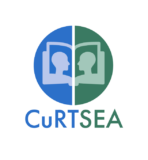Research Background, Aims and Findings

Culturally Responsive Teaching is an approach to instruction that involves understanding and embracing cultural diversity, showing authentic appreciation of different ways of knowing and doing and communicating that are connected to a larger historical and political context (Howard & Rodriguez-Minkoff, 2017).

Culturally Responsive Teaching BACKGROUND
Ladson-Billings’ (1995) frameworks echo the teacher’s learning (through critical reflection) and the teacher’s teaching (based on students’ assets). Teachers first recognize their own perspectives of culture, race, class, and gender; understand root causes of unconscious biases and oppression in the United States; and, in the classroom, find ways to understand their students and integrate student cultures, experiences, and ways of learning.
These two themes (critical reflection and asset-based teaching) are common in other conceptualizations of Culturally Responsive Teaching (Banks, 1993; García and Öztürk, 2017; Irizarry, 2007; Paris, 2012), and are the two key components of CuRTSEA. Critical reflection is a process of identifying cognitive biases, understanding their sources in a sociohistorical context, and adjusting perspectives and actions based on new perspectives (Cranton, 1996). Critical reflection helps with teacher-student relationships, expectations, both of which are related to student outcomes. As a hallmark of culturally responsive teaching, asset-based teaching has been central to the research base. Aronson and Laughter (2016) synthesized classroom-based research on asset-based teaching and the relationship to student outcomes. Asset-based teaching “was demonstrated repeatedly to have positive impacts on student outcomes” that include student achievement and success areas like attitudes, motivation, and academic skills that correlate with academic achievement.

Morrison, Robbins, and Rose (2008) also attempted to glean asset-based teaching themes examining how CRT was operationalized in 45 classroom-based studies from 1998 to 2008. Like Aronson and Laughter’s synthesis, the authors shared specific classroom practices, such as strategies for how students receive and express information, how they participate and work together, and ways of incorporating student cultures.
CuRTSEA's TEACHING
CuRTSEA combines asset-based teaching with focused, critical reflection, alongside research-based professional development for a comprehensive culturally responsive teaching program for the ultimate goal of increased student achievement.
Research Aims
THE CuRTSEA PROJECT WILL:
- Create a comprehensive, high-quality teacher professional development program that is usable, feasible, scalable and cost-effective in high schools
- Contribute to the evidence-based research on teacher professional development and culturally responsive teaching
THE CuRTSEA PROJECT EXPECTS TO:
- Find evidence of improved Latinx/Hispanic student engagement, relationships with teachers, and behavior, including increased attendance and academic achievement
- Find evidence of teachers’ increase in culturally responsive teaching practice, knowledge, and positive beliefs, as well as their individual and collective confidence in their ability to improve academic outcomes for Latinx/Hispanic students
See critical reflection lessons learned from our first year at: Dean, C., Wisniewski, R., & López, F. (2022). Nurture critical reflection to achieve equity. The Learning Professional (online exclusive).
CuRTSEA's REFERENCES
Allensworth, E., & Easton, J. Q. (2013). What matters for staying on-track and graduating in Chicago public high schools: A close look at course grades, failures, and attendance in the freshman year. Journal of Education for Students Placed At-Risk, 18(1), 68–83.
Allensworth, E., Ponisciak, S., & Mazzeo, C. (2009). The schools teachers leave: Teacher mobility in Chicago Public Schools. Chicago, IL: Chicago Consortium for School Research.
Aronson, B., & Laughter, J. (2016). The theory and practice of culturally relevant education: A synthesis of research across content areas. Review of Educational Research, 86(1), 163–206.
Banks, J. A. (1993). The cannon debate, knowledge construction, and multicultural education. Educational Researcher, 22(5), 4-14.
Bottiani, J. H., Larson, K., Debnam, K., Bischoff, C., & Bradshaw, C. P. (2017). Promoting educators’ use of culturally responsive practices: A systematic review of inservice interventions. Journal of Teacher Education, 69(4), 1–19.
Cranton, P. (1996). Professional Development as Transformative Learning. New Perspectives for Teachers of Adults. The Jossey-Bass Higher and Adult Education Series. Jossey-Bass Publishers, Inc., 350 Sansome Street, San Francisco, CA 94104.
Darling-Hammond, L., Hyler, M. E., & Gardner, M. (2017). Effective teacher professional development. Palo Alto, CA: Learning Policy Institute .
Darling-Hammond, L., Wei, R. C., Andree, A., Richardson, N., & Orphanos, S. (2009). Professional learning in the learning profession. Washington, DC: National Staff Development Council.
de Brey, C., Musu, L., McFarland, J., Wilkinson-Flicker, S., Diliberti, M., Zhang, A., Branstetter, C., & Wang, X. (2019). Status and trends in the education of racial and ethnic groups 2018 (NCES 2019-038). U.S. Department of Education. Washington, DC: National Center for Education Statistics.
Dee, T. S., & Penner, E. K. (2017). The causal effects of cultural relevance: Evidence from an ethnic studies curriculum. American Educational Research Journal, 54(1), 127-166.
Easton, J. Q., Johnson, E., & Sartain, L. (2017). The predictive power of ninth-grade GPA. Chicago, IL: University of Chicago Consortium on School Research.
Garcia, E. E., & Öztürk, M. (2017). An asset based approach to Latino education in the United States: Understanding gaps and advances. New York: Routledge.
Gay, G. (1975). Teachers’ achievement expectations of and classroom interactions with ethnically different students. Contemporary Education, 46(3), 166–172.
Gay, G. (1980). Ethnic pluralism in social studies education: Where to from here? Social Education, 44, 52–55
Gay, G. (1994). At the essence of learning: Multicultural education. West Lafayette, IN: Kappa Delta Pi.
Gay, G. (2010). Culturally responsive teaching. Theory, research, and practice (2nd ed.). New York: Teachers College Press.
Howard, T. C., & Rodriguez-Minkoff, A. C. (2017). Culturally relevant pedagogy 20 years later: Progress or pontificating? What have we learned, and where do we go? Teachers College Record, 119(1), 1–32.
Irizarry, J. G. (2007). Ethnic and urban intersections in the classroom: Latino students, hybrid identities, and culturally responsive pedagogy, Multicultural Perspectives, 9(3), 21–28.
Kochhar, R., & Cilluffo, A. (2018). Key findings on the rise in income inequality within America’s racial and ethnic groups. Retrieved from https://www.pewresearch.org/fact-tank/2018/07/12/key-findings-on-the-rise-in-income-inequality-within-americas-racial-and-ethnic-groups/.
Ladson‐Billings, G. (1995a). But that’s just good teaching! The case for culturally relevant pedagogy. Theory Into Practice, 34(3), 159–165.
Ladson-Billings, G. (1995b). Towards a theory of culturally relevant pedagogy. American Educational Research Journal, 32(3), 465–491.
Morrison, K. A., Robbins, H. H., & Rose, D. G. (2008). Operationalizing culturally relevant pedagogy: A synthesis of classroom-based research. Equity & Excellence in Education, 41, 433–452.
Paris, D. (2012). Culturally sustaining pedagogy: A needed change in stance, terminology, and practice. Educational Researcher, 41(3), 93–97.
Rice, J. K. (2003). Teacher quality: Understanding the effectiveness of teacher attributes. Washington, DC: Economic Policy Institute.
Zavala, M., & Sleeter, C. E. (2020). Transformative ethnic studies in schools: Curriculum, pedagogy, and research. New York: Teachers College Press.
